Despite its reputation, corporate training doesn’t have to be a bore. Let your trainees actively contribute throughout the training and you can bet it will become way more engaging!
As part of Slido’s IT & Security team, I’m involved in organizing our annual mandatory security training.
It’s always been a challenging task, but this year was even more special. Not only have we grown in headcount, but for the first time, we’ve done this training fully remotely – via video conferencing.
Security is quite a difficult topic to grasp and – sometimes – a bit dull. Because of this, we used real-time interaction to make the training as participatory and interesting as possible.
Here are some of the things that worked really well for us and that helped us pull off a truly engaging online corporate training.
1. Run the training both synchronously and asynchronously
What’s more boring than online security training? Pre-recorded online security training.
We knew that, so keeping the training asynchronous only was not an option for us. We wanted to run live sessions so that we could talk to our team and make sure they really understood the content.
As our Security and Compliance Specialist, Kristian Sommer, who facilitated both of our live sessions, said: “Running the training live is priceless. We can test people’s knowledge in real-time, ask for their opinion, or give them a chance to ask us questions if anything’s unclear.”
In the end, we ran two live Zoom sessions – one in the morning, one in the afternoon – to accommodate multiple time zones and to allow people to choose which session they wanted to attend.
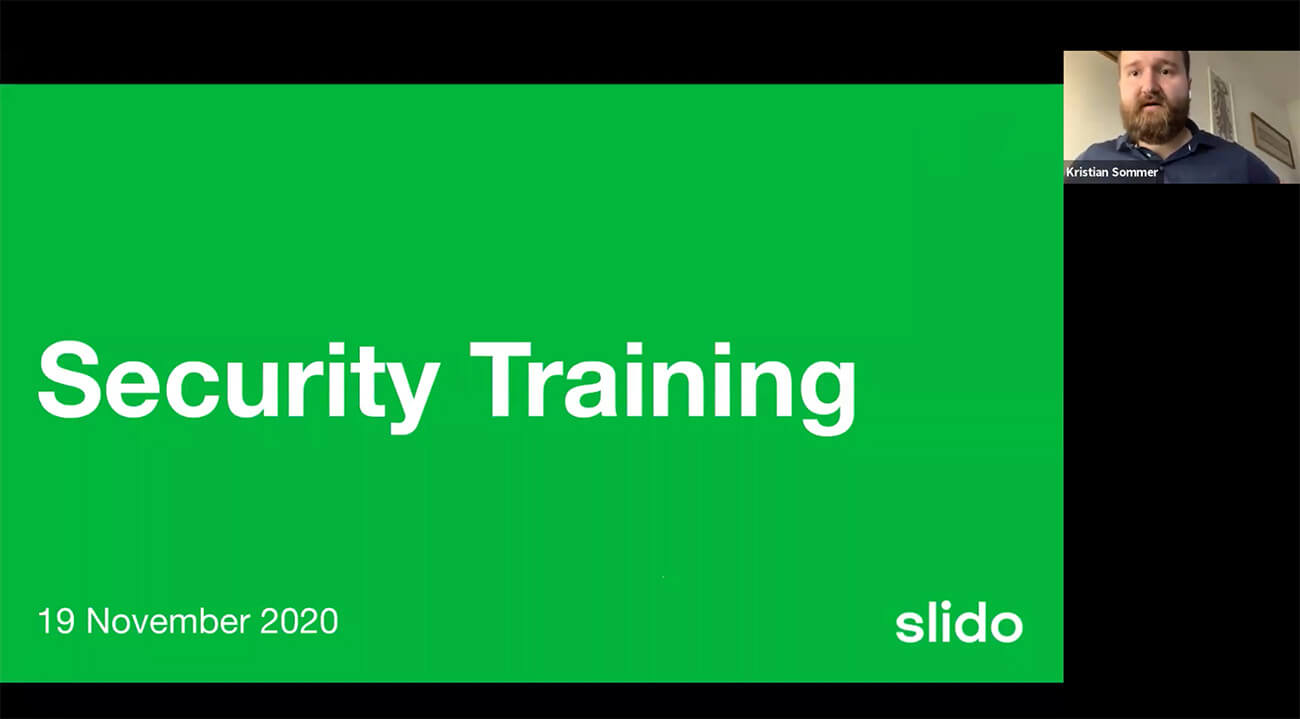
We also recorded the first session and shared the recording with our team in Slack so people could watch the training whenever they wanted in case they couldn’t attend any of the live sessions.
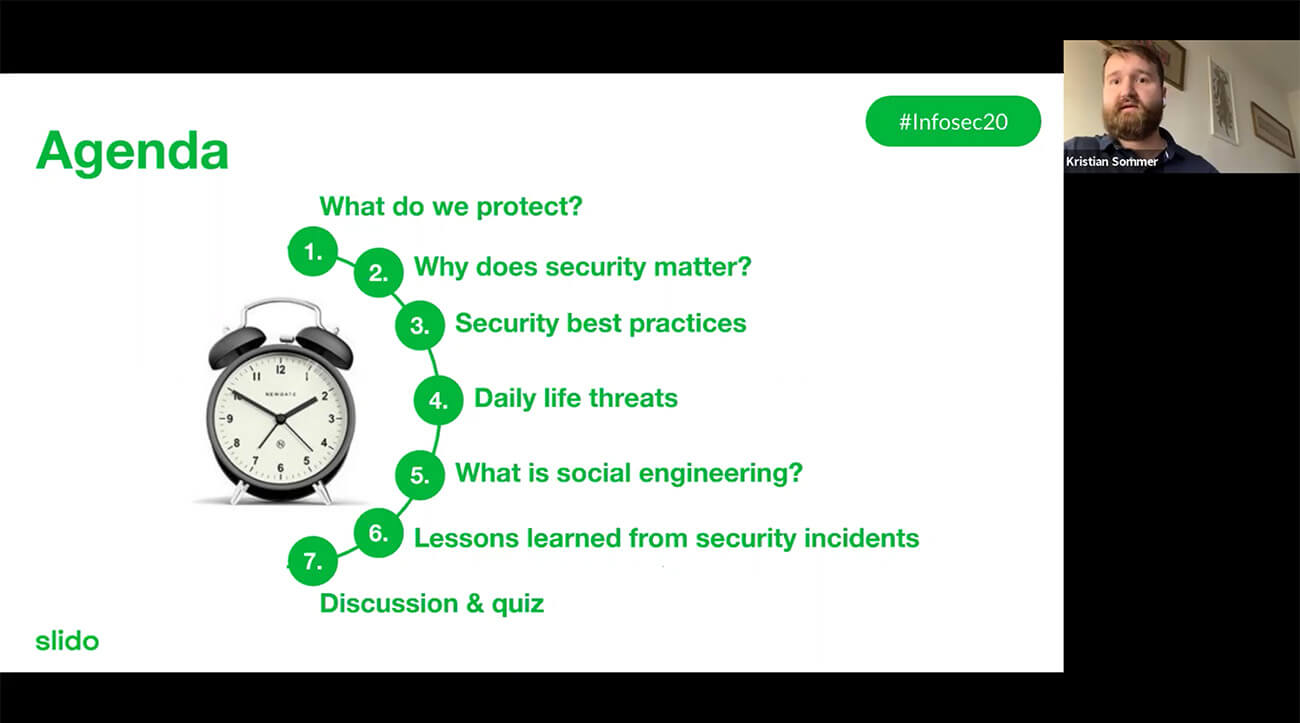
2. Use polls to captivate attention, especially for difficult content
Security may not be the most engaging of topics. On top of that, our presentation was full of do’s and don’ts, rules, and reasons behind those rules. So to get the message across, we added multiple polls into our presentation.
Polls are great for “waking people up”, prompting them to think, and sparking the discussion.
We ran a poll about every 15-20 minutes during the presentation. We wanted to make people think about the topic on their own – as opposed to just passively listening to facts. And what better way to captivate attention, if not by thinking?
Here are some examples of polls that we used during the training:
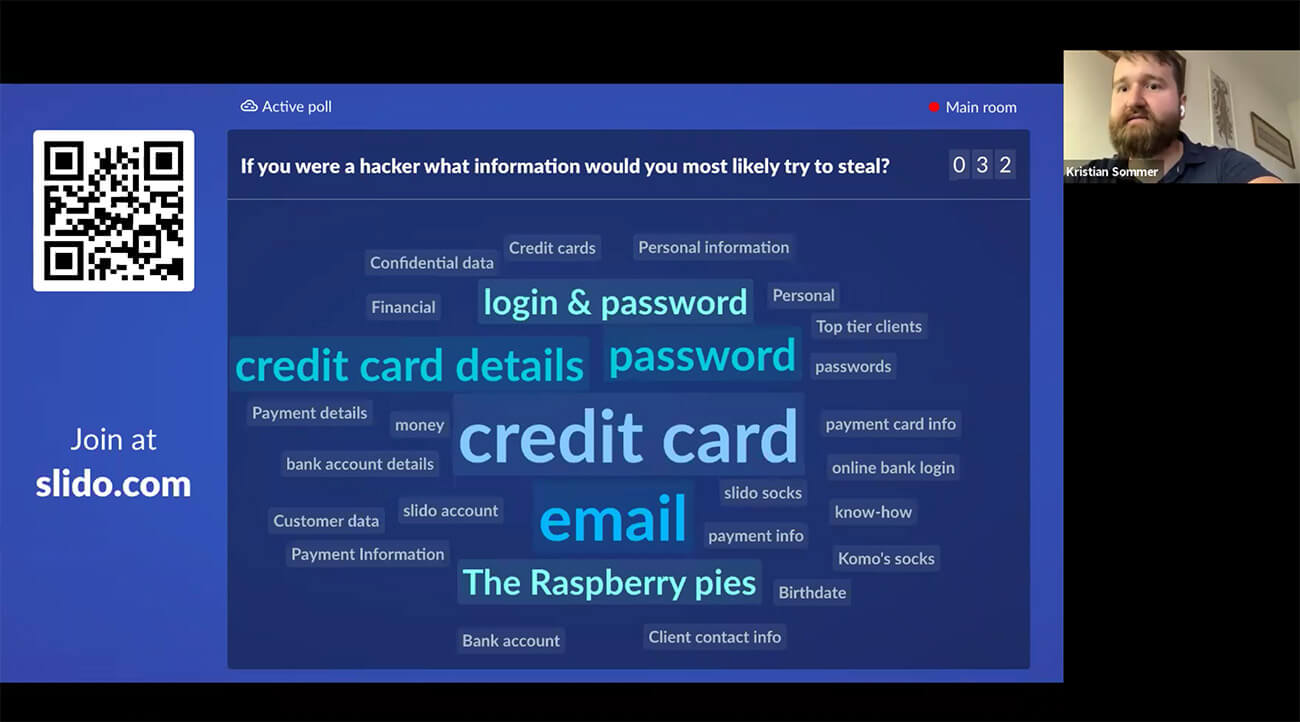
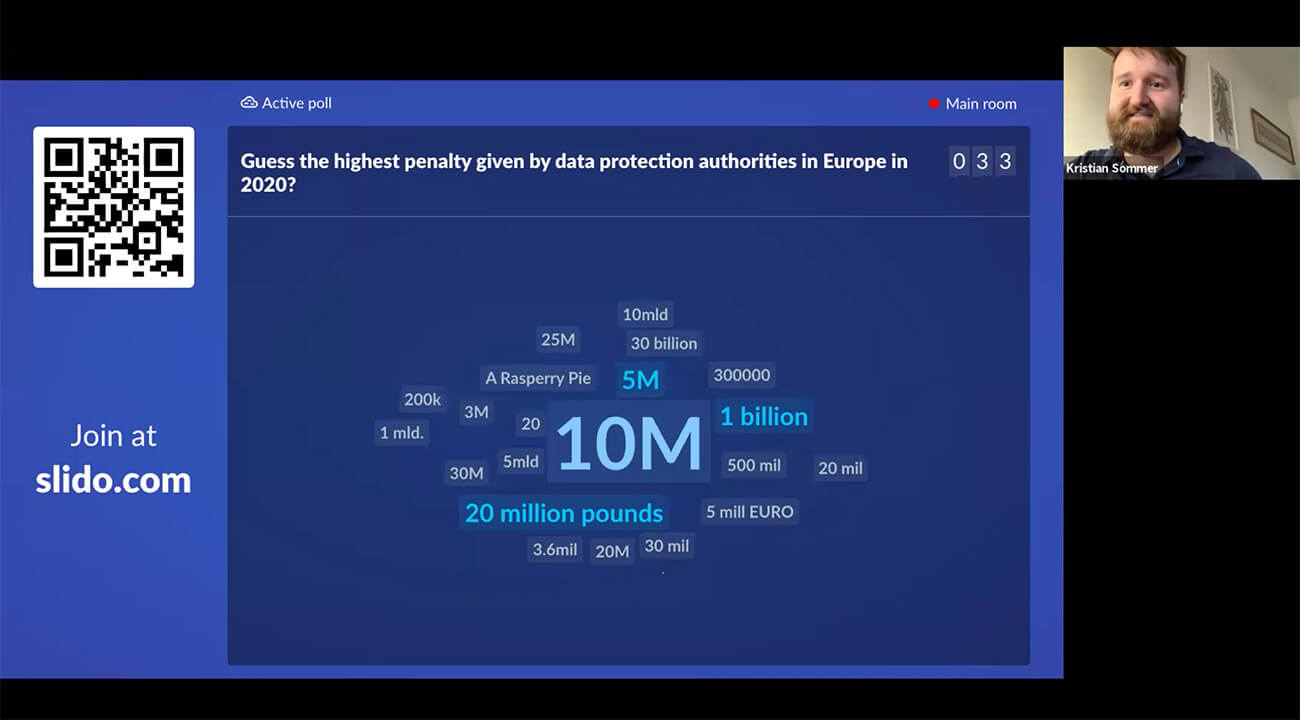
Polls are effective drivers of learning. People are much more likely to retain the presented information if they were prompted to think about it first.
Read more: 20+ Examples of polls for more interactive training sessions
3. Illustrate tough content through visuals and scenarios
Whatever the topic – any corporate training tends to be information-heavy. And security and data protection is not an easy nut to crack.
To make it easier for our employees to process all the meticulous details, we used many visuals and infographics in our presentation, together with real-life situations to illustrate the topic better.
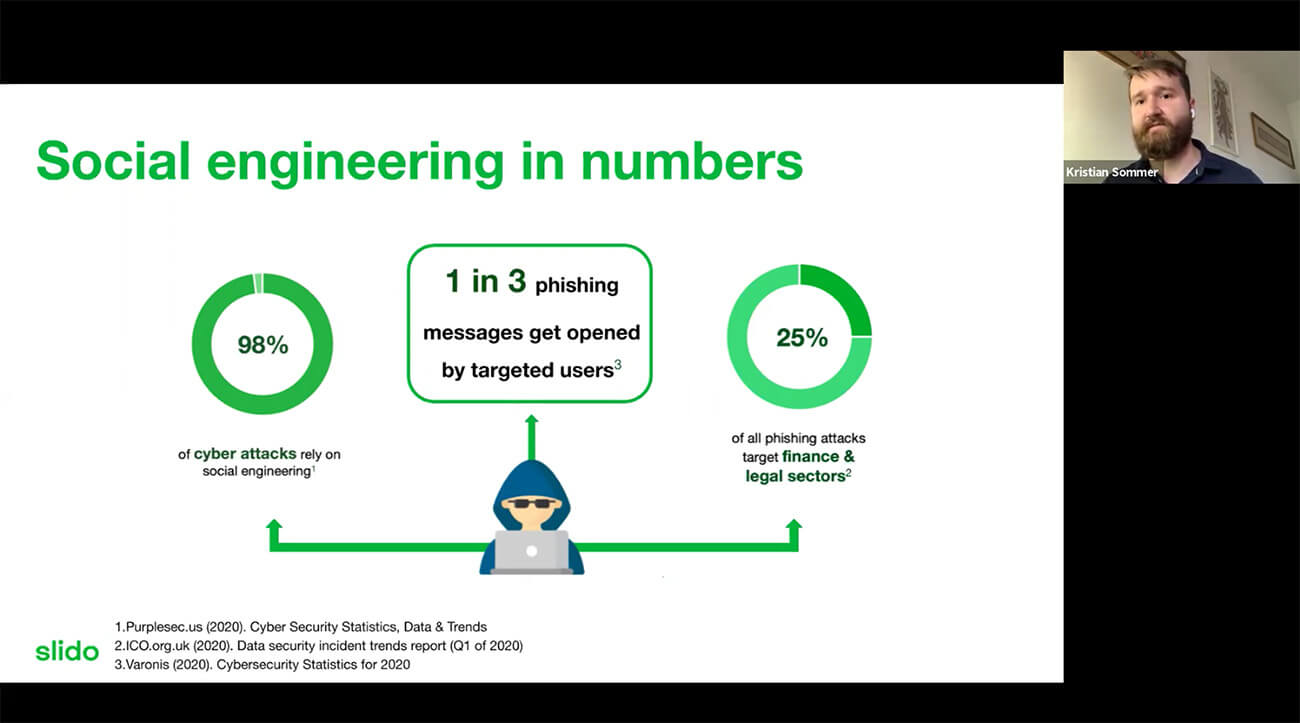
For example, one part of our presentation was about security threats. We wanted our team to picture concrete real-life situations where threats can happen. In one instance, we showed a picture of a typical phishing email; on another, a picture of a suspicious browser extension.
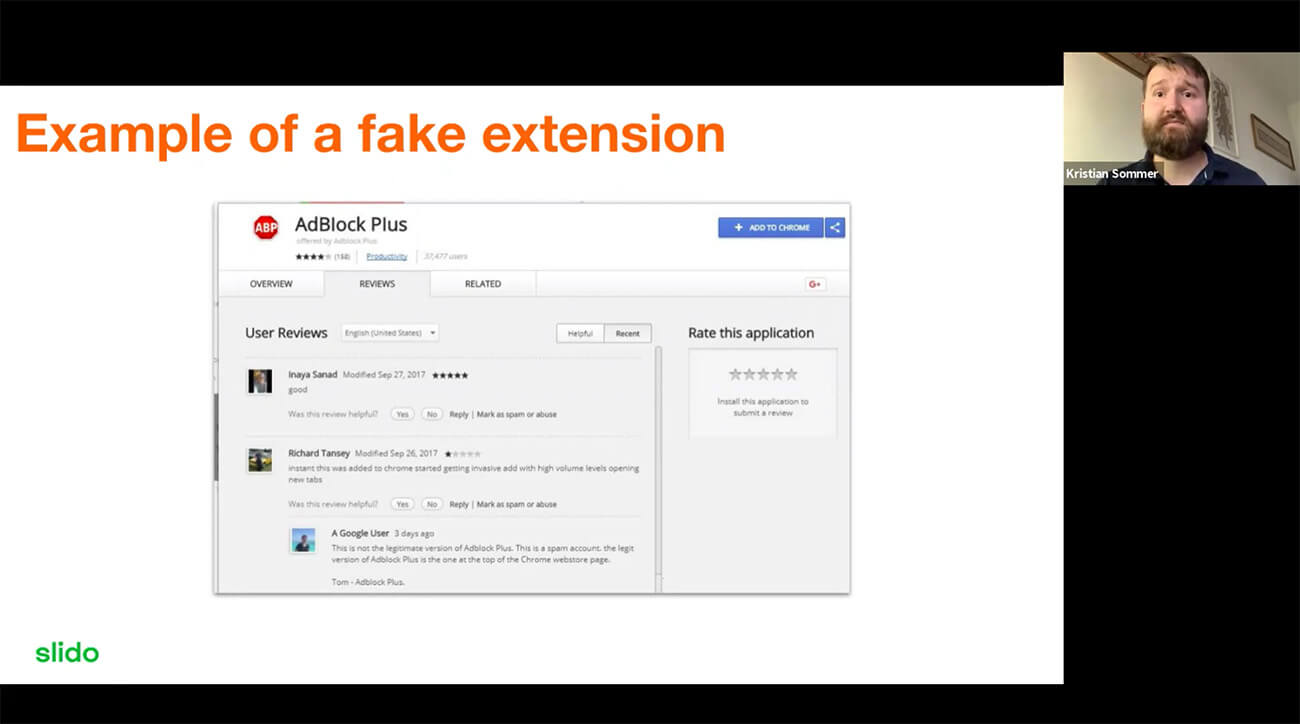
4. Test employee knowledge with a quiz
After the presentation, we ran a live 10-question quiz to check how much our teammates had learned during the training. It was a multiple-choice quiz with classic test questions and scenario-solving questions, such as: “What would you do in this situation?”
We displayed the quiz questions one by one on the screen to see the real-time results. If we started seeing too many incorrect answers, it gave us a hint that the topic wasn’t clear enough. Kristian, who facilitated the training, then stopped there and re-explained until everyone understood.
Seems like this approach was worth it because the average score for the quiz was 9/10 and that’s despite some tricky questions!

5. Dive deeper into the topic with an open Q&A
Don’t forget to give your participants a space to ask questions. It’s a way to further deepen the learning because your trainees will have the chance to follow up on what was being presented or clarify any unclear issues.
The safest way to do a Q&A online is through a Slido Q&A feature – your trainees will simply submit their questions online. It is much more practical than asking, “Are there any questions?” and expecting your participants to unmute themselves and speak up (which they often are reluctant to do).
At our security training, we ran about a 20-minute Q&A session at the end of each of the two live sessions. We also encouraged our teammates to upvote the submitted questions – this way, the most relevant ones jumped to the top and were answered with priority.
6. Send out a quiz survey to those who didn’t participate live
Besides the two live training slots, we didn’t forget about those who weren’t able to join in person. We shared a recording of the morning session in Slack, along with a quiz survey, containing the same quiz questions as in the live sessions.
Since completing the training was mandatory, we had to make sure every single person in Slido filled out the survey. Luckily, we were able to track who had already done the test in Slido Analytics and sent a kind reminder in case someone still hadn’t completed it.
And what’s the difference between a Slido quiz and a Slido survey? They’re similar in that they’re both a set of poll questions. They’re different in that you can only run a Slido quiz live (synchronously); while you can send and complete a Slido survey on-demand (asynchronously).
7. Ask for people’s feedback to improve the next training
Since we run the security training annually, we want to keep making it better and more engaging year over year. We can do that thanks to the feedback we collect from our employees.
Was this training too long? Not clear enough? Not in-depth enough? We want to know. Our employees tend to be honest, so reading through the comments is sometimes tough. Though the lessons learned are worth it.
So much so that the most recent training got an average score of 9.4!
We keep our feedback survey simple, yet informative. One classic NPS rating poll to see the value of the training at a glance and one open text poll to dig deeper.
For example:
- On a scale of 1-10, how valuable did you find this security training? (rating poll)
- Do you have any suggestions for improvement? (open text poll)
A few extra tips for an even more effective training
#1. Have all data from the training stored in one place. With Slido Analytics, you can check the attendance, see all the quiz results and poll votes, and export the data as a Google sheet or an Excel file.
#2. For a more engaging training session, integrate Slido directly into your Google Slides or PowerPoint presentation. You will then be able to run all polls and quizzes with one click, without leaving your presentation.
#3. In case most of your trainees on the conference call have their cameras off, follow the vote count in a poll or a quiz to see if your audience is engaged and paying attention.
#4. My favorite poll type for “guess” or “what do you think” type of questions is a word cloud. You will be surprised by the out-of-box answers you’ll get!
#5. Use the Multiple Rooms feature to run two simultaneous polls – for example, one room for an after-training feedback survey and another for a quiz survey for the asynchronous training session.
Over to you
Yes, corporate training can be boring. But it doesn’t have to be. You can make it more interesting and engaging by giving your trainees space to actively contribute to the content of the training.
Collect your trainees’ opinion, involve them in a discussion, test their knowledge in a live quiz, give them a chance to ask questions – the possibilities are endless.
Just don’t let them sit through the presentation passively. That’s not how the learning happens.
I hope I got you inspired by the above engagement tactics we used during our recent corporate training.
See for yourself how you can transform your own training sessions with Slido. Try Slido for free below or contact our sales team for more info.




